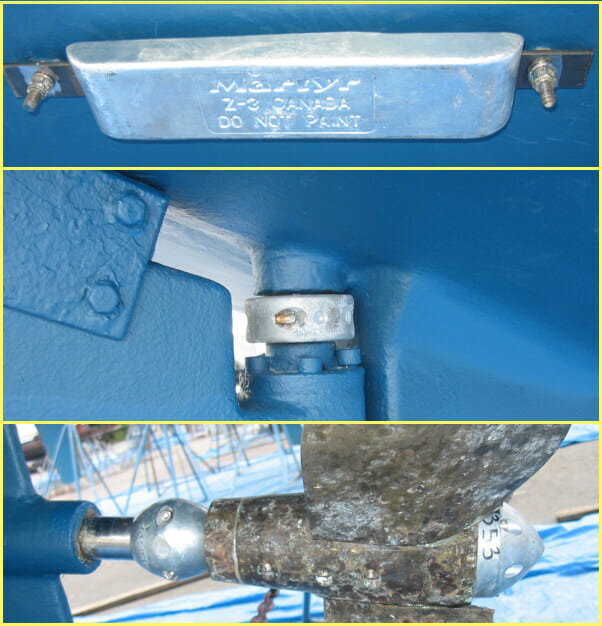
Mobile Lab, Biz, and Bottom Jobs
Since the last post was nearly 6 months ago, it would hardly do for me to just expound in detail on recent activity without first restoring context. I’ve been microblogging on Facebook, which has scratched the itch at this end, but that platform is useless when it comes to leaving a meaningful public archive. So I need to bring things up to date before sharpening the focus onto specifics.
The underlying challenge here is that there is no simple linear transition to a pair of distant sailboats from 4300 square feet of Geek Entropy on an island without moorage. I’m thus embarking on a caricature of “moving aboard,” complicated further by my quixotic desire to turn Nomadness into the Starship Enterprise in the process. I have to throw everything up in the air and expect it to fall back to earth, completely rearranged and considerably smaller… that 4300 square feet worth of stuff must now fit into about 1000.
A key tool for transitional stability is the mobile lab (named Polaris). This was well underway in my last posting, and is now essentially finished. Rather than fill space here with a description, I’ll just link to my detailed article about Polaris elsewhere on this site.
At the moment, this machine is sitting outside my house on Camano Island, slowly becoming my primary workspace as I take the axe to over a decade of clutter. Things are leaving via FreeCycle, eBay, and garage sales… but there is a long way to go.
Meanwhile, a temporary landing zone has been established in Olympia. We moved the sailboats a couple of months ago, and rented a small studio with enough land to accommodate trailers (the back yard of a dear old friend of Sky, about 4 miles from the marina). I’m not thrilled with the marina or South Sound in general, but I have hit a wall with every attempt to find live-aboard moorage with nearby powered parking in any of the places I’d like to be… and Sky has family health issues and a friend network pulling her in that direction.
And so, I’m spending this prime Northwest cruising season faffing about with logistics while my boat waits, freshly bottom-painted but stuck in murky waters on an end tie next to covered moorage. She’s in danger of whacking her shrouds on a metal roof in easterly winds and power-boat wakes, and if she’s still stuck there during heavy snowfall there’s the small matter of the dock sinking and being supported by bar-tight docklines connected to the trapped boats, but hey… at least I can park my mobile lab on-site and they are cool with live-aboards and boat work. That’s more than I can say for most marinas around here… few even answer email, most have waiting lists, and some will go all Nazi on your nautical ass if you dare open a paint can or spin up a drill.
At this point, I really want to find the fast-forward button and get moving on fun stuff. I’d take a break and go cruising, but I need to get my place on the island rented out ASAP to stem the bleeding cashflow.
Speaking of Business…
We had a somewhat crazy idea after buying Dervish (Sky’s sailboat) and being stuck with an unwanted boat trailer. Why not rent it out? Keelboat trailers are rare, and commercial boat-hauling services are expensive. I made a little web page, and she ran an ad in 48 North. The rig has been busy ever since, covering thousands of miles.
It hasn’t been without trauma… all four tires developed bubbles and had to be replaced, the brakes had their wires pull out thanks to a rewiring job with insufficient slack, every job presents unexpected challenges, and we had to do one hauling job ourselves after a boat yard in Port Orchard declared loading a Catalina 27 impossible <eyeroll>. But it’s working, and at this rate Dervish should be paid for in a year or two of trailer-rental revenue.
Nomadness has an associated business model as well, but it requires extensive geekery and writing… a far more time-consuming process. The only ROI on my expensive monster will be the joy of geek expressionism, something I desperately want to get back to.
But there’s another boat in the Nomadic Research Labs flotilla that hasn’t gotten much attention lately, and that is the Microship. This amphibian pedal/solar/sail micro-trimaran is the result of about a decade of full-time focus, all the money I managed to earn from speaking gigs, the generous help of hundreds of sponsors and volunteers, and one hired fiberglass/machining guru who spent years on-site at the Microship lab.
My life changed in various ways 6-7 years ago, derailing the planned expedition, yet I was loathe to pull the plug… so kept puttering on the project. This segued into the Bubba kayak, then Shacktopus (an abstracted technomadic toolset independent of mobile substrate). In 2005 my father passed away, so I spent 6 months shutting down the family home in Kentucky, then decided to leverage the value of the house to move up to a boat of global-voyaging scale.
The first attempt was a mistake (Microship-on-steroids, we called it), but then I found this Amazon 44. Despite a few things that might have been deal-breakers had I known about them, this is the boat I’ll be using for the foreseeable future… but one little detail remains: I still have the Microship, parked in the middle of the building that was erected for its construction.
More than just the familiar twinge whenever I walk through the lab, this is getting to be a bit of a problem: I have no place to put it, other than tarped-over in that Olympia back yard. Since I’ve finally accepted that the 14,000-mile Clueless & Lark expedition on coastal and inland waterways is not going to happen, I guess… well… I guess I need to sell the micro-trimaran.
I put a note on the website about this a while back and got a few inquiries, but I really need to find a mediagenic technomadling who sees this as a way to shortcut a massive development effort. Of course, my design goals are quirky enough that there may be nobody who fits this unique boatlet, but in case there is…
Nomadness Haulout – a Photo Essay
Finally, an update on the boat. While all this has been going on, serious geekery (Arduino nodes, Linux server, console fabrication, even the Waterworks) has been back-burnered.
She did have a haulout, though — her first since 2005, and long-overdue. The diver in Oak Harbor, last time down, estimated 5-600 pounds of biology clinging to the bottom. Ancient antifouling paint was long-gone, and bare metal was showing in spots. Yikes. I scheduled a haulout at Swantown, coincident with the move to Olympia (an entertaining 3-day run that included anchoring in the front row for the legendary Quartermaster Harbor fireworks display on July 4).
I’ve had a few previous boatyard experiences that left me wary of the whole industry, but I gotta say this was pretty good. The Port folks (Tony and Jessica) were superbly competent, and the guys at Shurtz Marine were a pleasure to deal with. We had a long talk first, and agreed on a flat rate bottom job (with an upcharge for fancy paint), as well as all the hand-holding I needed at no charge (though they’d be happy to start the clock anytime, of course, if I decided to delegate).
Nomadness was on the hard for a couple of weeks, and I did all the prep work for the bottom job. There were about 150 patches of bare steel, and all had to be ground to bright metal, acid-etched, and covered with multiple primer coats… with every step constrained by induction times and temperature-dependent recoat intervals.
The worst part was the bottom of the keel, where completely unfamiliar paint colors revealed that this area had been ignored during previous haulouts. I spent the brutal heat wave of July suited up, grinding just inches over my head, and slinging toxins… yielding a self-portrait I used as my Facebook profile picture for a while:
It was grim, but worth it… here’s a before-and-after photo of this out-of-sight/out-of-mind area. There’s plenty of steel there, of course, and aesthetics are not an issue, but it is very important with a metal boat to keep the protective “glove” intact.
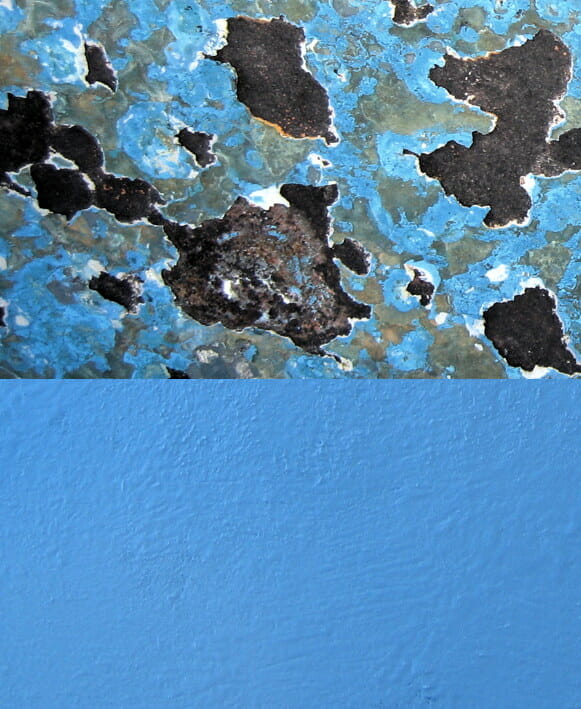
I complain, but the process was actually useful in an unexpected way… really getting to know my ship. Ultimately, I’m responsible for this machine; in some distant anchorage, if something goes wrong, there is nobody in the world who will care as much as I do about the situation. As I discovered in 2008 with the plumber-from-hell, assuming that someone else will take care of it is not a viable attitude for the captain of a vessel. Not only did I get an intimate feel for the entire underwater profile, but I made a database of all the through-hulls, extracted key dimensions, and photographed every detail.
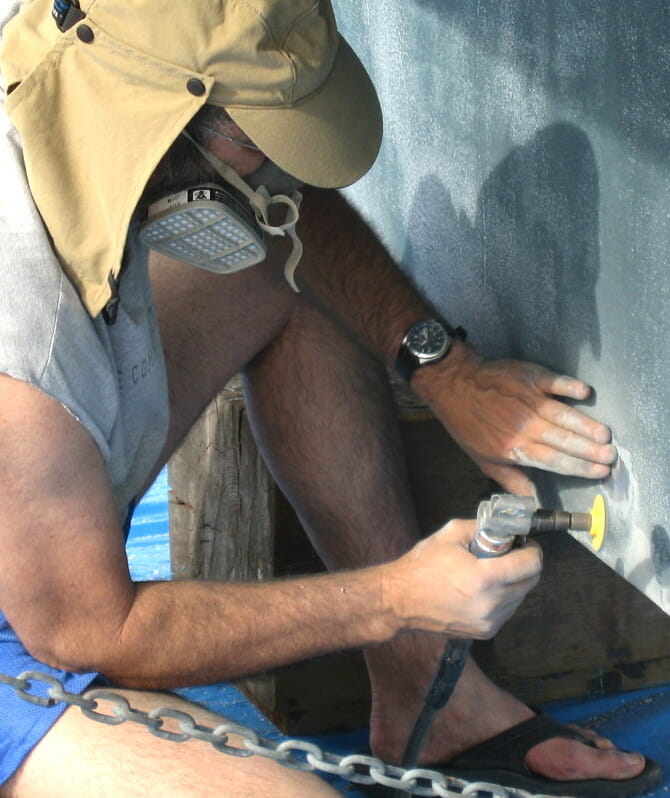
After completing all the prep, I stepped back and let their guys do the bottom job. I chose Micron 66, a self-polishing copper-acrylate copolymer that does not use TBT. Antifouling is one of those subjects that leads to endless passionate discussion in the forums, and I have no idea if it was really the best choice… but after discounting others that have not worked well for me and factoring in the steel hull and northwest usage pattern, I opted for this top-of-the-line Interlux product in the hope that it will delay my next haulout by a year. We went with a red indicator layer covered by blue, both with cayenne pepper added (useful, according to anecdotal evidence, but nobody really knows):
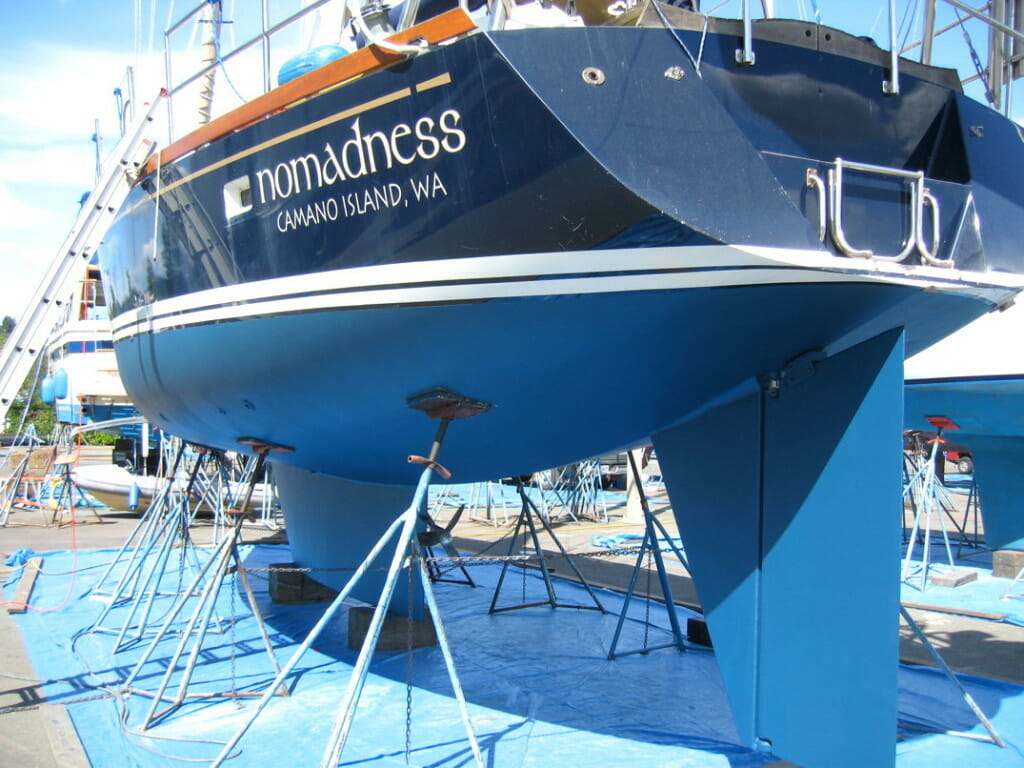
The remaining below-waterline details included Max-prop maintenance, replacing all the zincs, and going over everything with a keen eye. Here are the new sacrificial zincs, which are intended to give up material in response to galvanic or electrolytic influence before the much more expensive metal parts of the boat. Given the excellent coating, I’m not worried about the hull for now… but protecting that prop is critical, as well as the rudder shaft.

With the bottom done, I had to make a decision… how much to do topsides. There is no shortage of projects that would be much easier in a boatyard, including the looming mess caused by improper installation of aluminum opening ports. But that’s a big one, and I was getting nervous about time and money. I decided to limit the above-waterline jobs to repairing paint damage in three areas: the stem (from running up on a dock during a tricky maneuver in the wind last year, as well as other badly patched dings before my time), a 3″ starboard patch (from the rough workdock at Cap Sante after it ate one of my fenders in a storm), and a variety of rusty spots on the stern caused by bites from nasty steel fixtures on the dinghy.
Here is where Steve, the resident paint wizard at Shurtz Marine, really helped. He patiently explained the whole Awlgrip repair process, finally writing out an illustrated procedure sheet. I took everything down to bare metal with a vacuum sandblaster (coolest tool ever)…

From that point, it was just another precisely timed sequence of coatings, bringing the damaged areas up to a solid primer that can remain in that state for years (precise color-matching with Awlgrip is another matter entirely, and Steve didn’t blink with I told him that Cap Sante had quoted me $1300 to fix that little 3-inch patch caused by their dock). I’m just not going to go there; the only way to stay sane and avoid going broke as the owner of a steel boat is to frequently repeat this mantra: “workboat patina.”
The stem, by the way, will be protected by a chunk of KeelGuard. This is a dense plastic strip that is held in place by a highly aggressive adhesive (“you have one shot,” said Steve). It’s not often seen on sailboats, but who cares? Next time I plow into something, it will provide another layer of protection… and the VEE of the Redneck Bow Thruster will use it as a gasket. Alas, we didn’t quite get to this, so I get to take that one shot from the wobbly platform of a dinghy.
Launch day arrived. Tony and the crew picked her up again (protecting the fresh bottom paint with wax paper under the straps) and gingerly deposited her back in the brackish waters of South Puget Sound. There is no relief quite like that of seeing your boat once again afloat…
Now that the boatyard ordeal is over, my first project is inspired by the “hot” marina in which I’m parked, infamous for electrolytic corrosion due to deferred maintenance, metal dock structures, and a large number of derelict boats. My new zincs may be experiencing accelerated dissolution at the moment, but hopefully the galvanic isolator that came with the boat will minimize damage until I install the new isolation transformer.
I’ll save details on the AC power system for my next post, but here’s a nutshell summary of this project. To meet ABYC standards, I’ve added a dedicated shore-power circuit breaker, and also got rid of the old 30-amp twist connector in favor of a new SmartPlug. This goes straight to the Charles ISO-G2 isolation transformer, which is then one of the sources selected by a new Blue Sea panel. This is moving to the main power console, since the original location for AC switching was painfully unserviceable (it will become a much-needed pantry). And of course there will be new metering, integration with the Outback inverter/charger, and other refinements.
The most novel bit is a dedicated outlet (with ground-fault protection) for Dervish – making Nomadness the “shore power” source for the smaller boat. Given my 7.5 KW genset, shore isolation, and impending 420-watt solar array, this makes sense.
And Now, On with the Project!
Well, it feels good to catch up with this blog (tossing both Joomla and Blogger in the process). The writing process with WordPress is much more interactive and flexible, and I am no longer looking at maintaining this site as a chore.
Over the next few weeks, I’ll be focused on shutting down the facilities on Camano Island (want some stuff?) and moving all operations to two boats, one mobile lab, an auxiliary trailer, and the studio. Sheesh. It’s a little embarrassing to realize that I used to live on a bicycle!
Cheers from the Nomadhouse,
Steve




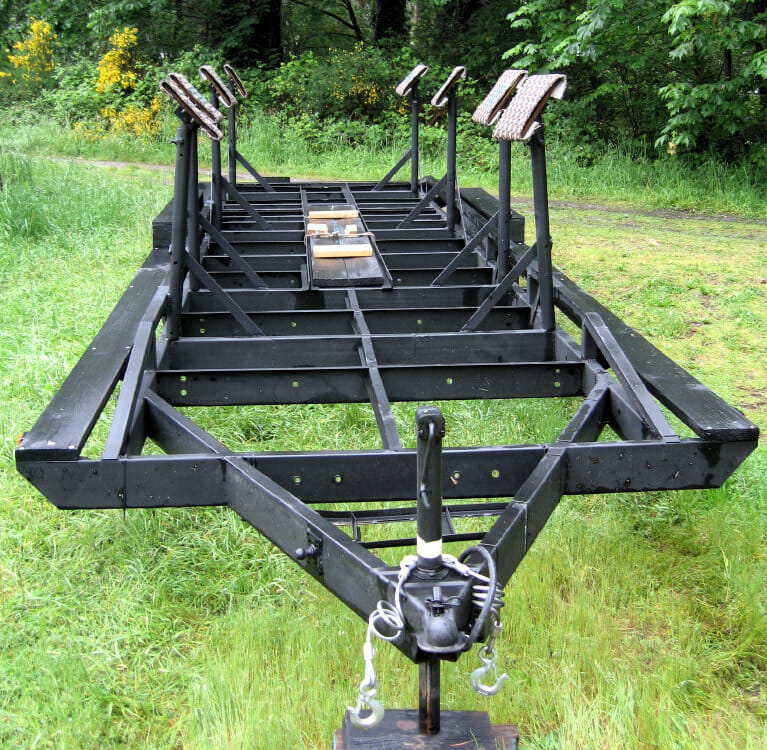
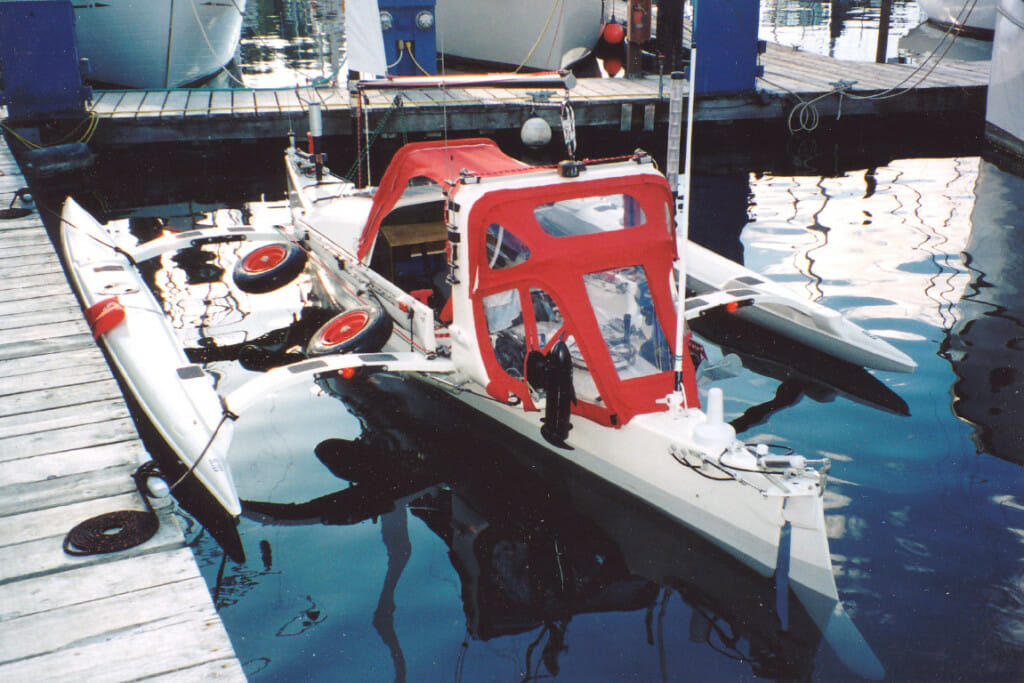
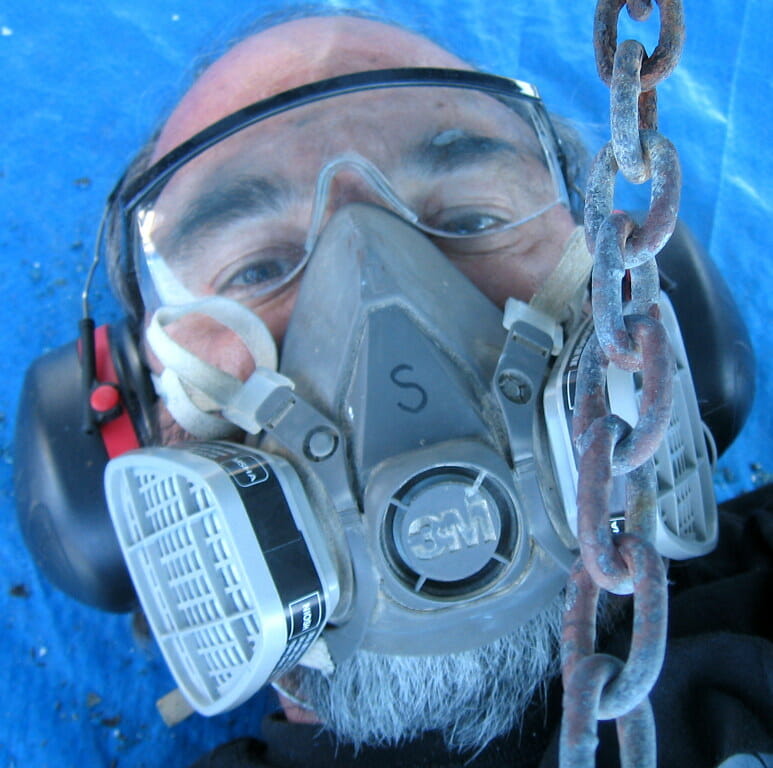
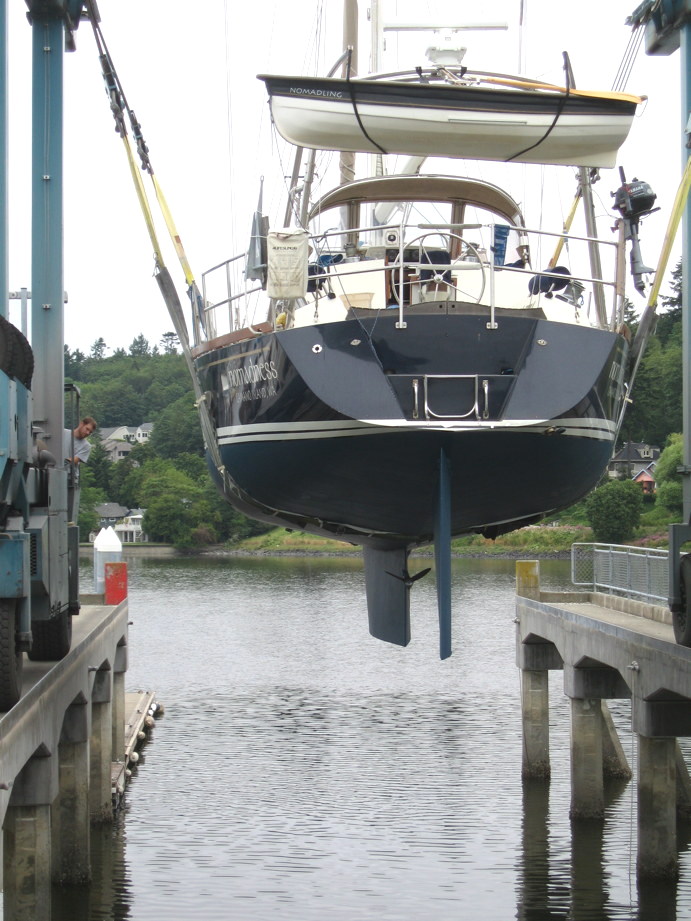
Ah the joys of a steel boat.
Make that american yuppie steel boat… not one of those utilitarian scruffy euro types one sees in far off anchorages.
I’ll offer this one observation…. good thing you are located in the pacific northwest, one look at that dark blue hull, dark non-skid deck and those non-opening windows in that green-house and I believe you’d die from a thousand heat strokes in the tropics.
But then in a mad max scenario… I’d think the rainy,sea food rich waterways of the n.w. would actually be one of the better choices…. assuming one can stand the weather.
The non-skid deck is actually white, not dark (Treadmaster, though it needs to be scrubbed). But those sloping pilothouse windows are indeed a greenhouse, which is why I have internal curtains affixed by magnets, blue on the inside and UV-resistant Solarplex on the outside. They make a huge difference. Otherwise, ventilation is quite good, and the above-waterline insulation prevents much solar heat gain.
Of course, visibility in the rain is another matter. Despite the attractive lines of my pilothouse, I would prefer more vertical windows with eyebrows… piloting from below in nasty weather is do-able, but kind of frustrating.
As to the steel… it has already prevented holing a few times, and the only thing “yuppie” about it is a previous owner’s decision to use expensive and hard-to-patch Awlgrip. Me? Workboat patina is just fine; this is a survival tool, not a showpiece.
For survivability, she’s a stout little ship, heated with scrounged wood, making water with a watermaker that can run on a hand pump if power fails, and generating electricity with a soon-to-be-installed 420-watt solar array. I think it’s pretty practical, and very few fiberglass boats turn my head these days. Cost-performance ratio still stings, but time-on-water will even that score!
Cheers,
Steve
I do feel a bit peevish, after all… it’s not like you’re this wall st banker living the good life after sucking my blood.
Just so you know… I posted (in a rare lucid moment) a post a year or two back …that you actually reposted .. in defense.
Sorry if I hit a soft underbelly nerve with that one (the post was aimed at the complexity of your systems in a real life,marine environment ) …and sorry if this recent post did the same.
In fact… (not to be political, however )… I think we are potential allies rather than adversaries… as such I’ll break off and wish you the best. Truly.
There’s bigger fish to fry.
Heh… I’m anything but a wall-street banker, that’s for sure. I have been screwed by those guys myself, and have little respect for those who make money by manipulating expectation with one hand while rewriting the rules of the game with the other.
And yes, I recall your earlier comment… and though it indeed seemed harshly worded, that doesn’t matter. I don’t mind questions that compel me to examine my own decisions; having to reply with some lucidity merely underscored my determination to press on. There’s no ego in it.
As with the excessively geeky BEHEMOTH and subsequent Microship, my quirky personal quest is not something that scales widely… although as before, I am pleased to see that many of the components that I’m developing have application elsewhere. My “business model,” in fact, now has as much to do with propagating enabling how-to material as telling adventure tales (if I ever get to that point!) I’m not making any pronouncements about how folks should chase their dreams. Those are personal decisions.
The only regret at the moment is that completely sufficient boats of similar scale can now be had for MUCH less than I paid, and I have not gotten enough mileage out of the intervening years to make up the difference. Moving aboard should take care of that… and that will also add a reality check to every design decision since I’m building my own everyday toolset instead of something that can easily become too abstract when done at the computer.
Thanks for the good wishes,
Steve
My son stumbled on your site and turned me on to you. I am a former live aboard in the Santa Barbara harbor. A stink potter for sure. I started out with a 19ft plastic outboard and graduated to a 28ft wooden twin engine partnership. A divorce led to a 31 foot plastic fantastic. Then a super women came into my life and we graduated to a 50 foot wooden former coast gaurd training vessel that the captain had turned into a decent live aboard. The years were 1980 to 1987. A simpler time to be sure. I worked for IBM at the time and the money didn’t seem to be a problem. As you know, the wood was a problem. Over the years the thru hulls came and went, The champayne flowed and we had a great time. My son was a great tinkerer and he had a great time taking stuff apart and also spending time away from his mother. (XXX) But that is another story. I enjoy your stories and encourage you to continue.